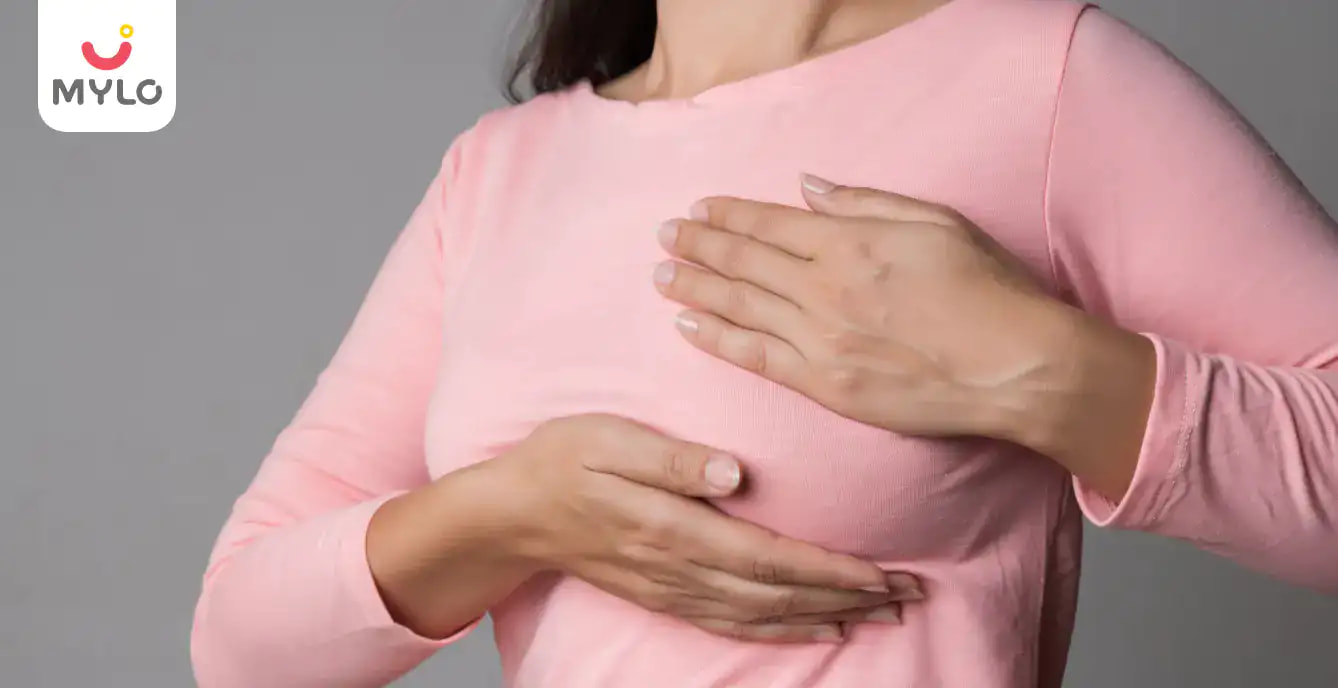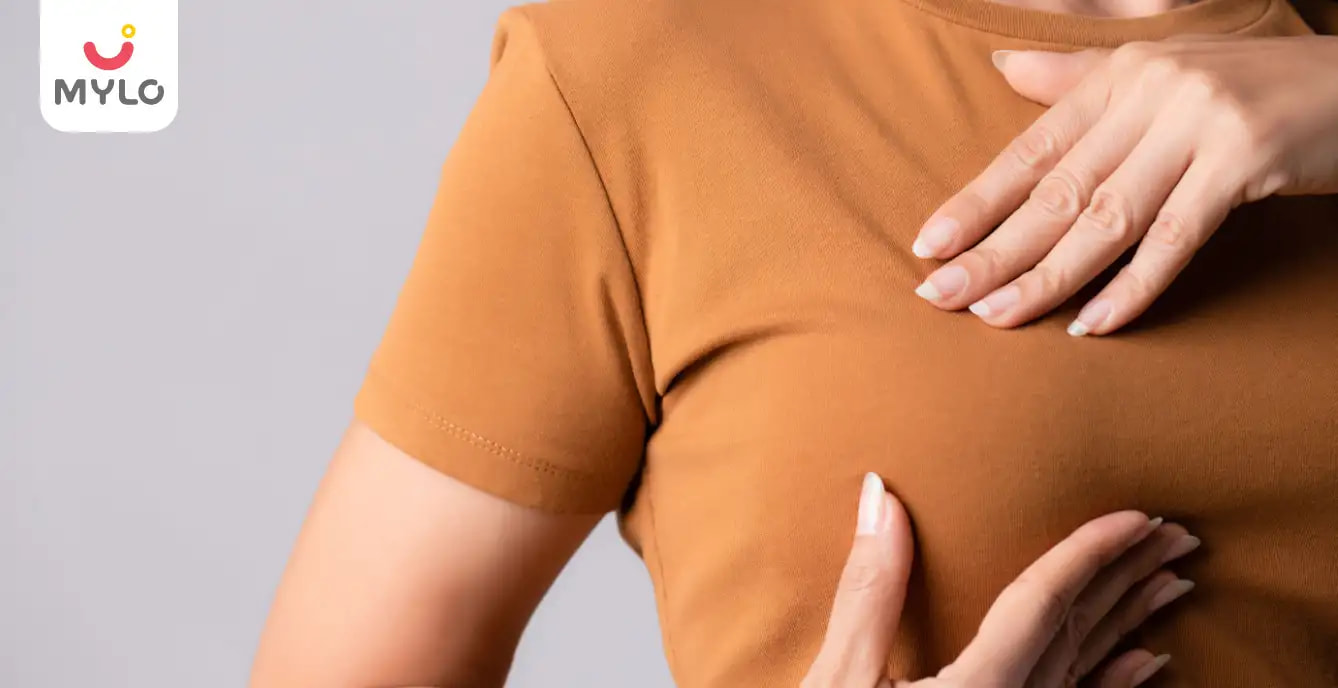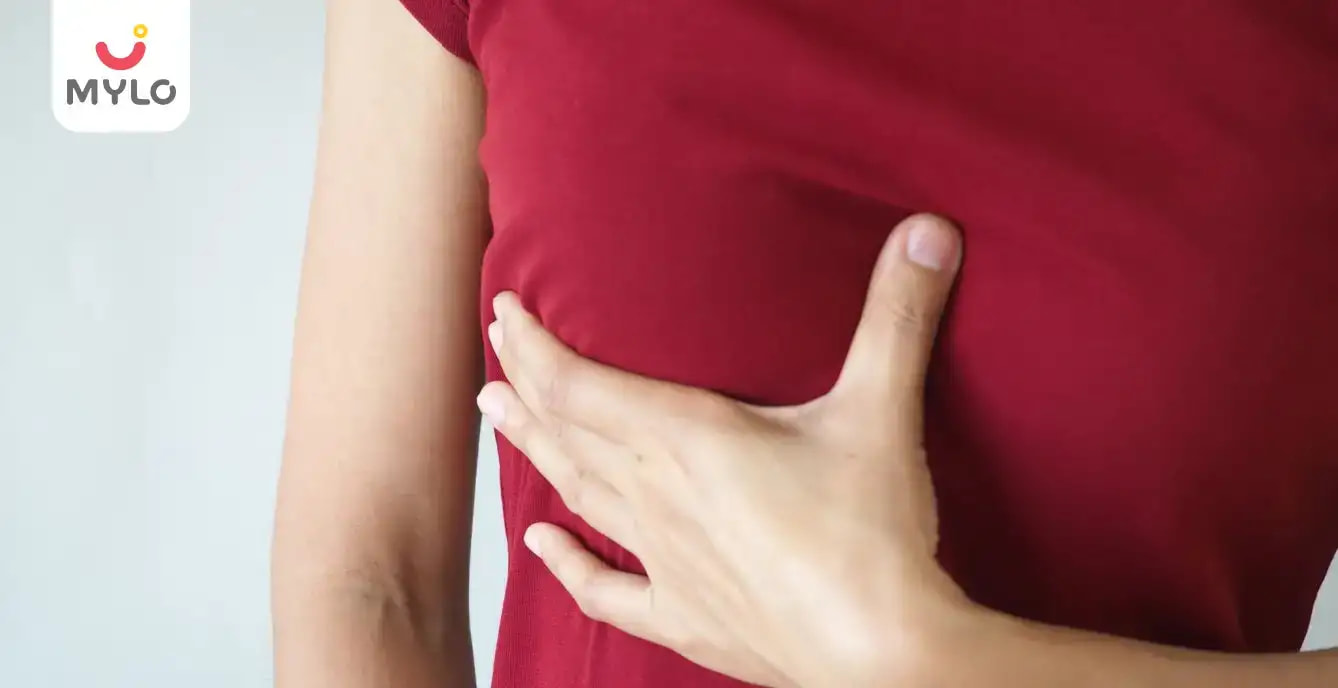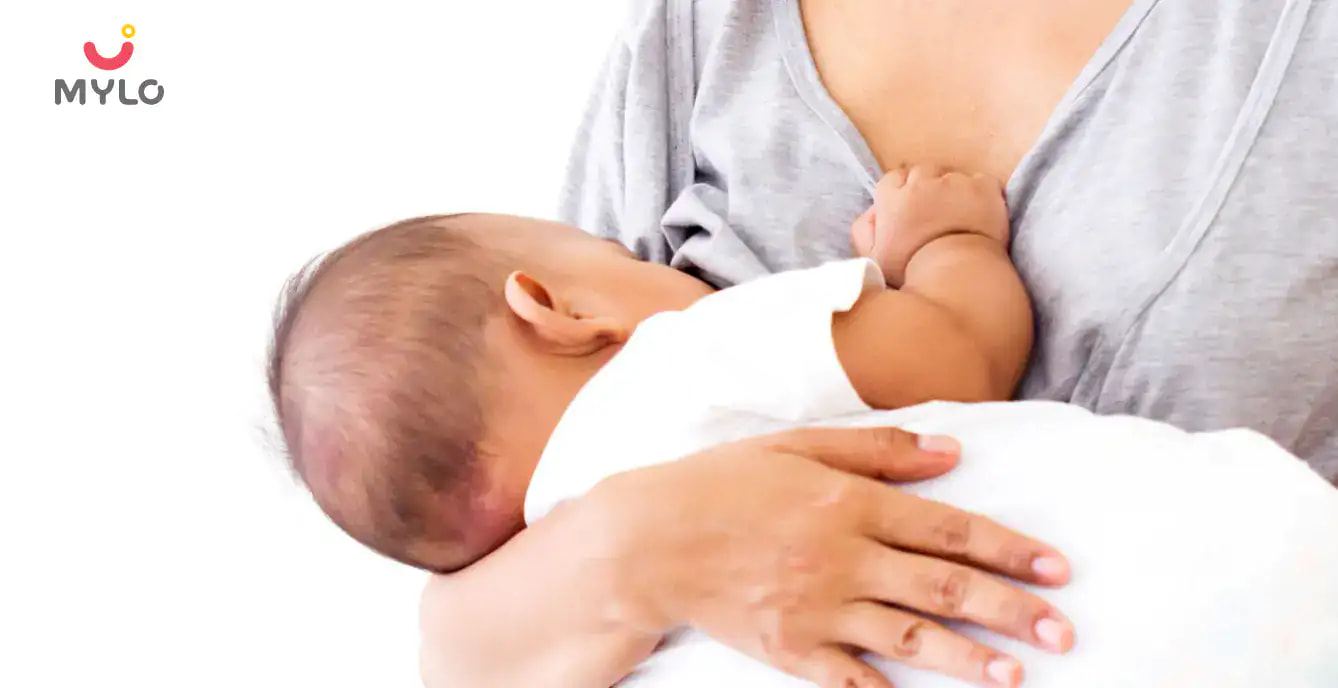Home

Women Specific Issues

Potential Causes of Nipple Discharge: Cancerous and Non-Cancerous
In this Article

Women Specific Issues
Potential Causes of Nipple Discharge: Cancerous and Non-Cancerous
Updated on 3 November 2023
Nipples are a primary part of breast tissue in both men and women. In women, they also serve as a source of nutrition for newborn infants, providing breastmilk during the first few months of life. While lactation during or post pregnancy is a universally observed phenomenon, any kind of nipple discharge at another time might be alarming. However, there are multiple causes for this occurrence that are minor and have no cause for concern. To throw more light on this condition, various causes of nipple discharge, both benign and serious, will be examined below.
Ordinary Causes of Nipple Discharge
These causes are normal and may not require any medical intervention.
1. Pregnancy
Nipple discharge, also known as lactation discharge or colostrum, is a natural occurrence during and after pregnancy. It is a clear, watery fluid released from the nipples when breastfeeding or during other forms of nursing and is considered a precursor to breast milk. The purpose of nipple discharge is not fully understood, but it is no cause of concern unless there is blood present in the fluid, at which point it is best to consult a doctor.
You maye like: Breast Lump During Pregnancy: When To Get Serious And Visit A Doctor
2. After Stopping Breastfeeding
Nipple discharge might be present even after the breastfeeding stage. This is also a completely normal occurrence and is no cause for concern. The discharge will automatically ebb after a while.
3. Physical Stimulation
Physical stimulation, such as pressing or squeezing, can also cause nipple discharge, even if a woman is not pregnant. Regular chafing of the nipples by constant contact with fabric and innerwear can also trigger this discharge.
4. Non-Cancerous Causes Of Nipple Discharge
The reasons behind nipple discharge might also point to some underlying conditions. However, these causes are non-cancerous and mostly treatable.
5. Fibrocystic Breast
This condition causes the growth of fibrous tissue in the breast and nipples. Although it can lead to lumps in the breast tissue, it is no cause for concern, as it doesn’t indicate carcinoma. It can, however, causes uncomfortable physical symptoms such as pain, itching, and nipple discharge that can be clear or greenish-hued.
6. Mastitis
Mastitis is an infection of the mammary glands. It’s most commonIt’swomen, and it can cause nipple discharge. Mastitis is caused by bacteria, yeast, or other microorganisms that get into the milk ducts and spread to the mammary glands. The most common cause of mastitis is the overproduction of milk (lactation). Nipple discharge may be a sign of mastitis, but it doesn’t always mean you have the infection.
7. Intraductal Papilloma
Intraductal papilloma is a benign tumour that can grow in the breast's milk ducts and cause nipple discharge. One of the most causes of nipple discharge, this tumour can cause blood discharge via the nipple when it becomes inflamed. However, it doesn’t indicate a cancerous growth.
8. Galactorrhea
Instead of a clear or coloured nipple discharge, patients suffering from Galactorrhea might secrete milk or a milk-like substance even when they aren’t pregnant or lactating. Some underlying causes of this condition include hormonal medications, psychotropic drugs, consumption of illegal substances and even hypothyroidism.
Potential Cancerous Causes of Nipple Discharge
Not all types of nipple discharge are benign. Some might be symptoms or indicators of critical conditions such as breast cancer. Moreover, the discharge might be the only symptom in such cases, apart from the telltale formation of lumps. Hence, it’s crucial to be examined by a medical professional to confirm or rule out this possibility. Here are two types of cancer that can cause discharge:
1. Intraductal Carcinoma
Intraductal carcinoma is a type of cancer that develops in the cells that line the inside of the ducts of the breast. These ducts are like small pipes that carry milk from the breasts to the baby. Intraductal carcinoma can spread to other body parts, including the lungs. The most common symptom of intraductal carcinoma is nipple discharge. This discharge may look like milk, pus, blood, or clumps of tissue. It may also smell bad and cause pain when touched.
2. Paget’s Disease
This form of cancer typically affects the nipple and surrounding skin. The discharge from the nipples may be yellow, green, or brown. Other symptoms of Paget’s disease are pain, redness, and swelling around the nipples. Nipple discharge may signify Paget’s disease and that treatment is needed.
Conclusion
This concludes a few major causes of nipple discharge in women. As is evident, some are regular conditions while others might require some form of medical treatment or home remedies. The biggest threat, however, lies with conditions like breast cancer that plague many women. Hence, it is prudent always to get it examined by a trusted medical practitioner to rule out the worst.
References
- Sajadi-Ernazarova KR, Sugumar K, Adigun R. (2022). Breast Nipple Discharge. NCBI
- Panzironi G, Pediconi F, Sardanelli F. (2018). Nipple discharge: The state of the art. NCBI



Written by
Priyanka Verma
Priyanka is an experienced editor & content writer with great attention to detail. Mother to an 11-year-old, she's a ski
Read MoreGet baby's diet chart, and growth tips

Related Articles
RECENTLY PUBLISHED ARTICLES
our most recent articles

Diet & Nutrition
গর্ভাবস্থায় আলুবোখরা: উপকারিতা ও ঝুঁকি | Prunes During Pregnancy: Benefits & Risks in Bengali

Diet & Nutrition
গর্ভাবস্থায় হিং | ঝুঁকি, সুবিধা এবং অন্যান্য চিকিৎসা | Hing During Pregnancy | Risks, Benefits & Other Treatments in Bengali

Women Specific Issues
স্তনের উপর সাদা দাগ: লক্ষণ, কারণ এবং চিকিৎসা | White Spots on Nipple: Causes, Symptoms, and Treatments in Bengali

Diet & Nutrition
গর্ভাবস্থায় পোহা: উপকারিতা, ধরণ এবং রেসিপি | Poha During Pregnancy: Benefits, Types & Recipes in Bengali

Diet & Nutrition
গর্ভাবস্থায় মাছ: উপকারিতা এবং ঝুঁকি | Fish In Pregnancy: Benefits and Risks in Bengali

Diet & Nutrition
গর্ভাবস্থায় রেড ওয়াইন: পার্শ্ব প্রতিক্রিয়া এবং নির্দেশিকা | Red Wine During Pregnancy: Side Effects & Guidelines in Bengali
- ইনার থাই চ্যাফিং: কারণ, উপসর্গ এবং চিকিৎসা | Inner Thigh Chafing: Causes, Symptoms & Treatment in Bengali
- গর্ভাবস্থায় ব্রাউন রাইস: উপকারিতা ও সতর্কতা | Brown Rice During Pregnancy: Benefits & Precautions in Bengali
- Velamentous Cord Insertion - Precautions, Results & Safety
- Unlock the Secret to Flawless Skin: 7 Must-Have Qualities in a Face Serum
- Unlock the Secret to Radiant Skin: How Vitamin C Serum Can Transform Your Complexion
- Gender No Bar: 10 Reasons Why Everyone Needs a Body Lotion
- Unlock the Secret to Radiant Skin How to Choose the Perfect Body Lotion for Your Skin Type
- Top 10 Reasons to Apply a Body Lotion After Every Bath
- Communication in Toddlers: Milestones & Activities
- How to Improve Vocabulary for Toddlers?
- A Comprehensive Guide to Understanding Placenta Accreta
- Vulvovaginitis in Toddlers Causes, Symptoms and Treatment
- A Comprehensive Guide to Understanding Cerebral Palsy in Children
- Bitter Taste in Mouth During Pregnancy: Understanding the Causes and Remedies


AWARDS AND RECOGNITION

Mylo wins Forbes D2C Disruptor award

Mylo wins The Economic Times Promising Brands 2022
AS SEEN IN
















- Mylo Care: Effective and science-backed personal care and wellness solutions for a joyful you.
- Mylo Baby: Science-backed, gentle and effective personal care & hygiene range for your little one.
- Mylo Community: Trusted and empathetic community of 10mn+ parents and experts.
Product Categories
baby carrier | baby soap | baby wipes | stretch marks cream | baby cream | baby shampoo | baby massage oil | baby hair oil | stretch marks oil | baby body wash | baby powder | baby lotion | diaper rash cream | newborn diapers | teether | baby kajal | baby diapers | cloth diapers |








